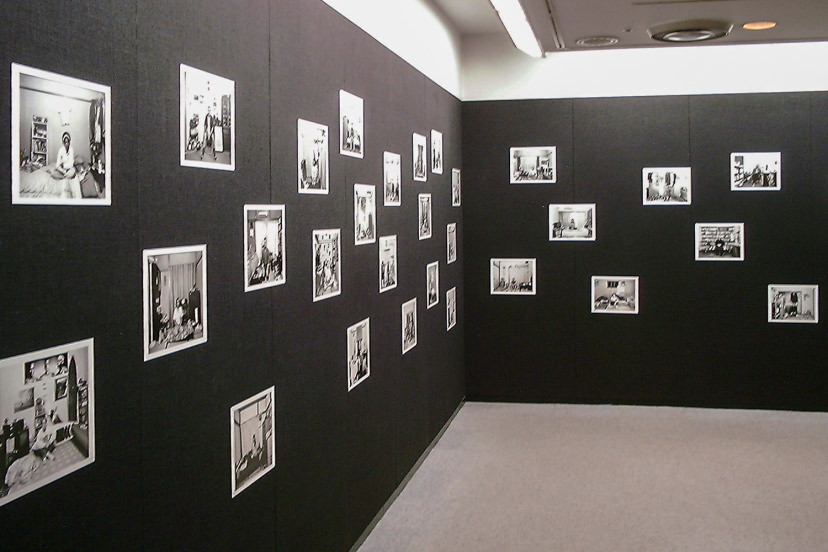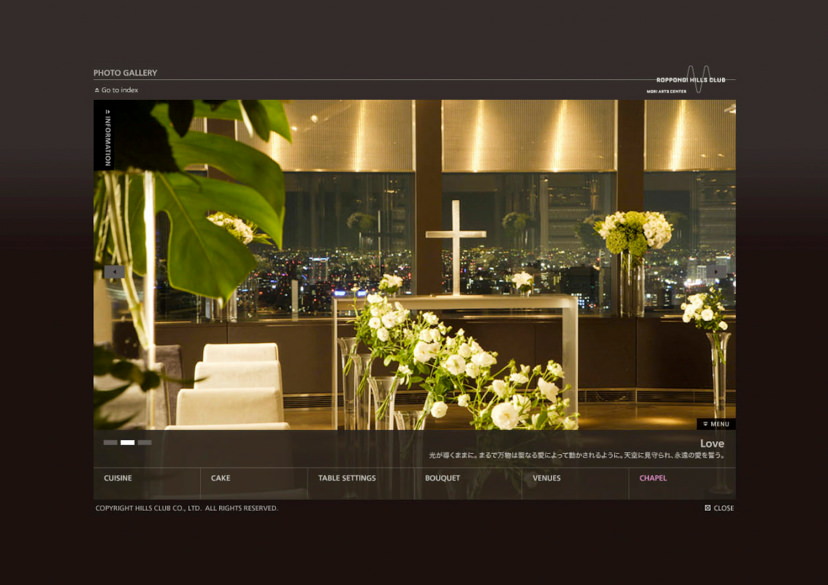Career Beginnings: My First Solo Exhibition and a Steep Learning Curve
Becoming a professional photographer is a journey with much trial and error, and much of the process involves making mistakes and learning from them. In the second article of his series of reflections, GOTO AKI tells us about the lessons he learnt at the start of his career in professional photography, from his first solo exhibition and after. (Text: GOTO AKI)

A piece from GOTO AKI's second solo exhibition. Taken at the house of a Bulgarian musician.
Debut at first solo exhibition but no jobs came...
The photography school I went to was like a training ground for photographers. [The previous article has more on the very beginning of GOTO AKI's journey into photography.] After graduating from it, I applied to hold a solo exhibition using works from the portfolio I took with me to New York, and was selected right away. And so, that’s how it was decided that I would have my first solo exhibition in 1999.
My first series of works were street photographs taken on black and white film in Bangkok and Shanghai. I was also lucky enough to have the chance to hold an exhibition of my second series of artworks the following year, in 2000. My second series consisted of black and white photos taken with a 4x5 camera over a 3 year period, and were of foreigners living in Japan, photographed in their homes.
By being able to hold a solo exhibition at a historic gallery in Japan, I had a fleeting expectation that I would be able to make money out of photography. I deluded myself into believing I would have a rosy start as a photographer, but in reality, there wasn't any talk of work coming my way. What I learned after holding a solo exhibition of my first works was the reality that many photographers in Japan produce their own projects using money earned in commercial photography. This led me to think about earning money through commercial photography. However, I became aware that I lacked the lighting knowledge and skills necessary for commercial photography. After some reflection, I realised that that I would not be able to work as a photographer unless I placed importance on equipment, as well as metering and lighting technology.
It was no use feeling down about it, so I bought a book about lighting and began to learn about it myself. That was back in the era of film photography. It took time and money to even learn one type of lighting, something that might seem hard to imagine in this era of digital photography.

At a street corner in Shanghai. The hand of a woman purchasing something from a store. A photo from a collection comprising of 30 pieces.

Taken at the venue of my second solo exhibition, "MIRROR SITE". Approximately 100 portraits taken in the rooms of foreigners from various countries living in Japan were on display.

The 4x5 camera I used for the shoot.
Learning about professional lighting in a photo studio
In the autumn of 1999, I decided to travel to Italy. I felt there was a limit to what I could learn on my own, so I wanted to try something different. Because there were already a lot of Japanese photographers living in Paris and London at the time, I wanted to challenge myself by going somewhere different away from the well-beaten track. At the time, an Italian friend did some searching for me and found Maurizio Mantovi's Cult Media Studio in Reggio Emilia.
He wasn't looking for staff at the time, but I pushed the point that I wanted to learn about lighting, and was able to attend the studio. I didn't have a work visa so even if I worked, I wasn’t able to get paid. Instead, I received a lot of film, and I went out to shoot on my days off. Day after day I learned how to set lighting in Italy, where English is not well-understood. Despite every day being very fulfilling, my savings ran out after several months, so I returned to Japan.

Cult Media Studio in Italy.
After coming back to Japan, I became a professional photographer at 28 years old. I was still short on knowledge and experience, but I made a business card, thinking that I would make it somehow. Because photography is a job that does not require a qualification, unlike other professionals such as lawyers, it is easy to enter the field. After that, however, it is simply a matter of having the resolve to continue with it.
I felt joy at finally being able to embark on my journey as a professional photographer, while at the same time, feeling uncertainty as to whether I would be able to succeed.

The photographer Maurizio of Cult Media Studio and myself.
Saying yes to all jobs that came my way
Turning professional didn't necessarily mean that jobs came straight away. I started off by calling unknown production companies and responding to job ads for photography schools and taking on small jobs. All I could do was do each job with care. Before long, I was receiving repeat jobs from the same clients. Even now, about 80% of my work is repeat work. During this time I learned two important things: To do the jobs in front of me in a reliable manner, and that helping editors and directors could open doors to the next job.

The invitation card of a fine restaurant.
At the time, I wasn't picky about the content of the work I did. The subjects of my shoots included weddings, cooking, houses, shops, musicians, models, portraits of business people, travel, landscapes, cars, etc. At any rate, I decided not to turn down any work, so I took on all kinds of shoots. I didn't imagine at the time that this experience would be of great benefit later. When I look back at the photos now, they were poorly taken and I feel really embarrassed.
At around the end of 2004 when I had become used to shooting professionally, the release of the Canon EOS-1Ds Mark II, a full-frame, high resolution DSLR, made it possible to take photos suitable for printing in size A3 . It was an ultra high-end camera and, costing around 800,000 yen at the time, it was also an expensive piece of equipment for a beginner like me, but it had 4.5 megapixels more than any other camera on the market. I figured that if I used the latest equipment, the scope of my work would expand, so I took the plunge and purchased it. I got rid of the equipment I had used until then, and replaced all of my lenses with new ones.

The EOS-1Ds Mark II, which was released in November 2004. With an image resolution of approximately 16.7 megapixels and a 35mm full-frame CMOS sensor, it boasted the highest specs of any DSLR camera available at the time.
In this way, my shift towards full-frame DSLRs marked the beginning of the end of my time as a beginner. The time had finally come for me to take the next step in my career.

Shots that I took of a musician, models, and for a fashion brand catalogue.

Shot of a wedding venue for the website of a membership-based club.
For SNAPSHOT articles by GOTO AKI, click here
5 Reasons Why the EOS 5D Mark IV is Ideal for Landscape Photography
4 Keys to Shooting Pre-dawn Landscapes
EF16-35mm f/4L IS USM: Breath-taking Landscape Photography Even With Handheld Shooting
Receive the latest updates on photography news, tips and tricks by signing up with us!
About the Author
Born in 1972 in Kanagawa Prefecture and graduated from Sophia University and Tokyo College of Photography. Goto published a photo collection work titled "LAND ESCAPES" and is also actively engaged in works such as “water silence” an installation that merges photographs with videos.
































